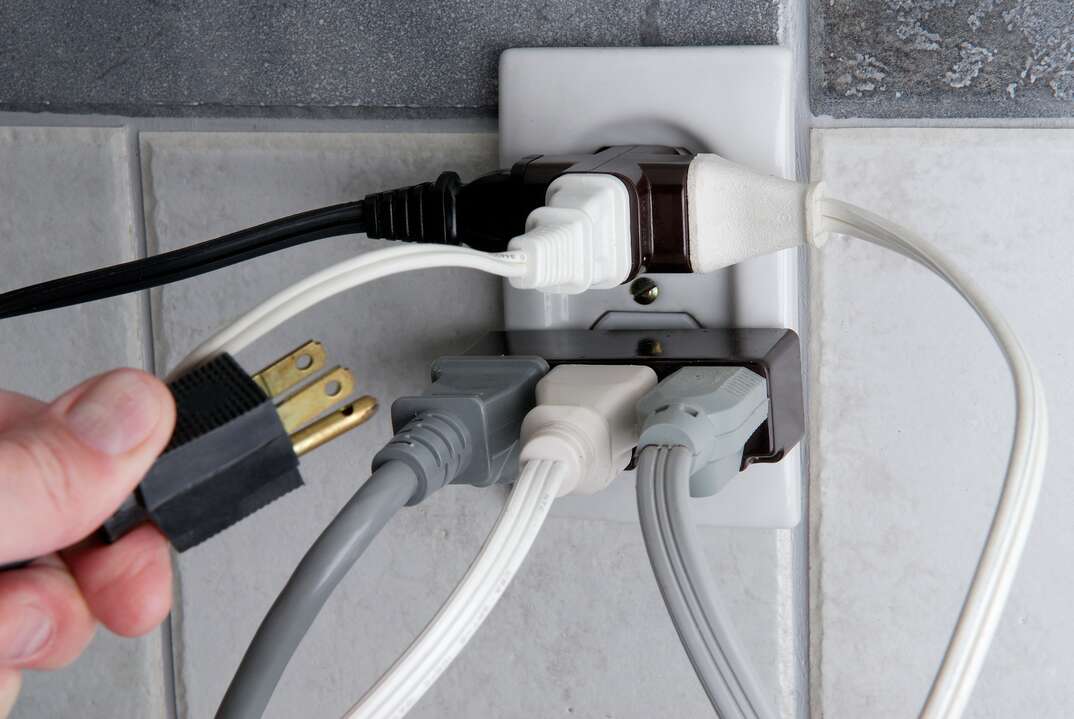- AppliancesElectriciansHVACLandscapingLocksmithPest ControlPlumbingRenovationRoofingT V RepairAll Home Improvement
- Car AccidentClass ActionCorporate LawCriminal DefenseDivorce LawEmployment LawFamily LawFinancial LawLegal AidMedical Injury LawyersMedical MalpracticeReal Estate LawWater Fire RestorationAll Legal
- InvestmentRetirementAll Finance
- Animal InsuranceAutoGeneral InsuranceHealth PolicyHome RentersAll Insurance
- DentalHealth SpecialistsAll Medical
- Animal CareVeterinaryAll Pets
- Auto GlassTowingAll Automotive
6 Common Electrical Mistakes to Avoid As a Homeowner

Electricity is a tricky little thing. As commonplace as it is, making the wrong kind of mistake where electrics and wiring are concerned can have grave consequences.
Check out these common home electrical mistakes to make sure you're not guilty of making them.
Extension cords can be a handy tool, but there are also several common electrical mistakes associated with their use. Some of those mistakes include:
- Running an extension cord under a rug or carpeting
- Overloading extension cords and power strips
- Using a cord labeled for indoor use outside
- Connecting multiple extension cords or power strips together
Choose a cord that's rated for the specific use you have planned for it, and make sure it can handle the electrical load. Only use outdoor cords outside. Extension cords come in varying lengths, so choosing a longer one instead of connecting multiple cords is a safer option. Always keep the cord out in the open instead of covering it with a rug or other items.
2. Not Labeling the Circuit Breakers
Quick, do you know where your circuit breakers are? Once you're there, can you tell which breaker controls which area of your home?
Having clear labels on every breaker could be a matter of safety in an emergency situation. If you need to cut the power quickly to a certain area, the labels can help you find the correct breaker faster. When you're doing electrical work, the labels help you shut off the correct circuit to complete the work safely. Electricians can also complete their work faster if you have a well-labeled breaker system.
Mapping breakers is an extensive process since the breakers aren't always neatly assigned to a single room. For accuracy, you'll need to turn off one breaker at a time and check all outlets and switches in the home to see which ones are on it. Then, write clear labels using a permanent marker or pen and place them next to the correct breaker.
Unplugging your appliances when you're not using them can lower your utility bill. Even when they're not running, electrical devices draw power. Plus, a power surge could damage an appliance if it's plugged in. Start unplugging appliances that aren't being used often, like a toaster or coffee maker.
4. Overloading Circuits
Running too many things on one circuit can cause it to overload, which can cause the breaker to trip or other issues, such as overheating. Air conditioners and large appliances often pull a large amount of energy and might need dedicated circuits. You can overload a circuit with lots of smaller items running together.
Balance the load on your circuits by moving plug-in items to different circuits if possible. You might need to hire an electrician to add dedicated circuits to some appliances or areas if they have a high demand for power.
More Related Articles
- How Do I Tell If an Electrical Issue Is Serious?
- Can One Bad Outlet Affect Others?
- How to Reset a GFCI Outlet
- What’s in My Electrician’s Van?
- 7 Ways to Save on Your Electric Bill
5. Ignoring Electrical Warning Signs
Frayed cords, loose outlets and overheating wires are just a few potential issues with your home's electrical system. Those issues might not seem like a big deal if they don't cause an immediate issue, but they're dangerous to overlook.
Inspect all cords before you plug them in, and inspect your appliances occasionally to look for issues with the wiring or cords. Pay attention to your outlets to see if anything looks off. Signs of an electrical issue can include:
- Burning smell
- Black or brown char marks on outlets
- Wobbly outlets
- Breakers constantly tripping
- Lights flickering or dimming
- Sparking
- Outlets that feel hot
- Buzzing sounds
If you notice any of these issues, call an electrician to have them investigate. Ignoring the problem could lead to a potentially serious situation, including a house fire.
6. Attempting to Make Professional-Level Repairs
Common electrical mistakes by homeowners often happen when they try to do a DIY electrical project without experience. If you follow proper safety protocols, you can typically handle minor issues, such as replacing an outlet, light switch or overhead light.
But it's usually safer to let a licensed electrician handle electrical work. That's especially true for larger, more complex jobs, such as adding new lights or fixtures, upgrading electric panels or rewiring your home.
If you do the work yourself, you could make common electrical wiring mistakes, such as cutting the wire too short, not using a junction box for wire connections or installing a three-slot outlet without a ground wire. These mistakes could cause electrical shorts, shocks or fires. Leaving the work to the pros can help you avoid common home electrical mistakes.
Elocal Editorial Content is for educational and entertainment purposes only. Editorial Content should not be used as a substitute for advice from a licensed professional in your state reviewing your issue. Systems, equipment, issues and circumstances vary. Follow the manufacturer's safety precautions. The opinions, beliefs and viewpoints expressed by the eLocal Editorial Team and other third-party content providers do not necessarily reflect the opinions, beliefs and viewpoints of eLocal or its affiliate companies. Use of the Blog is subject to the
Website Terms and Conditions.The eLocal Editorial Team operates independently of eLocal USA's marketing and sales decisions.



